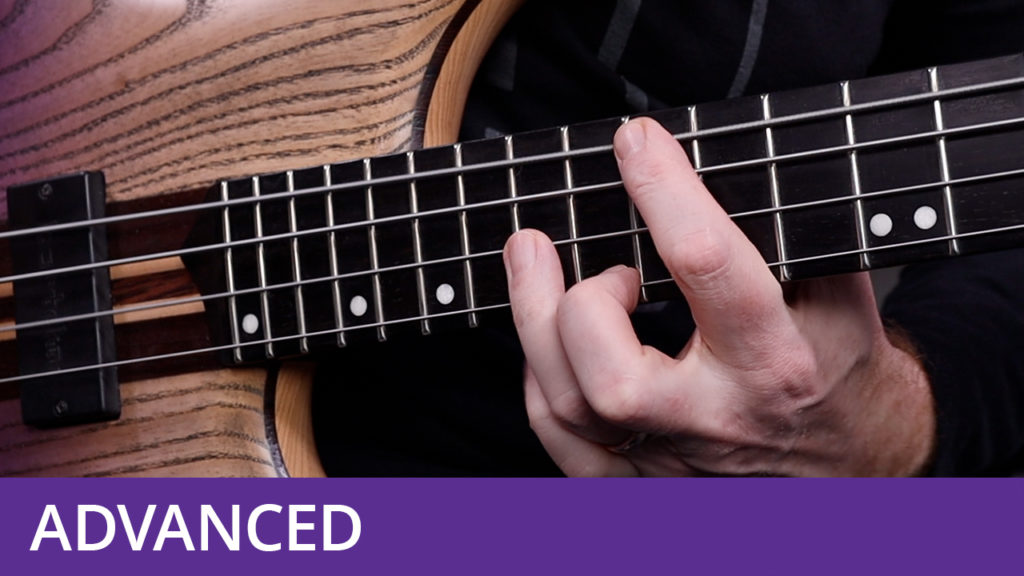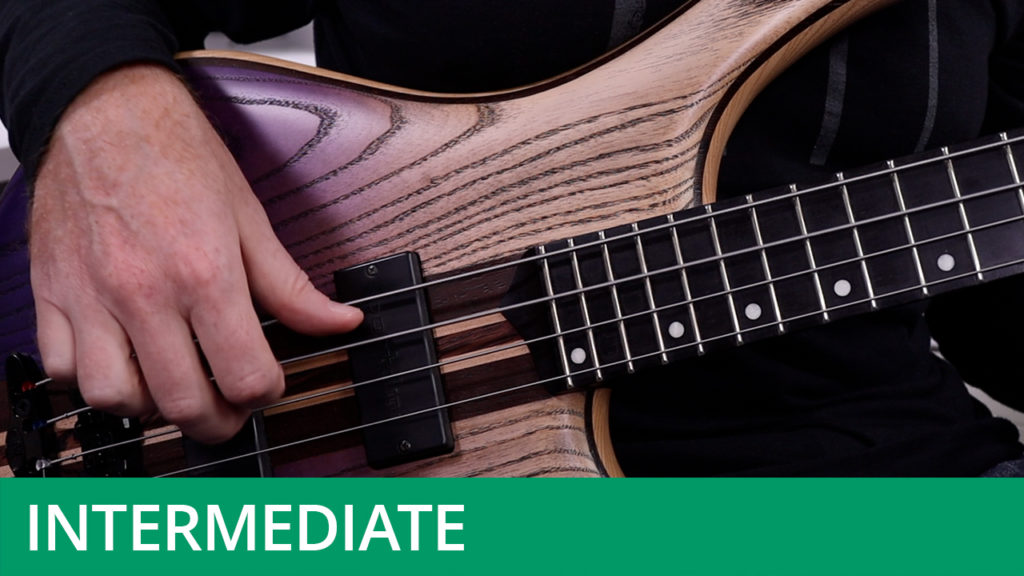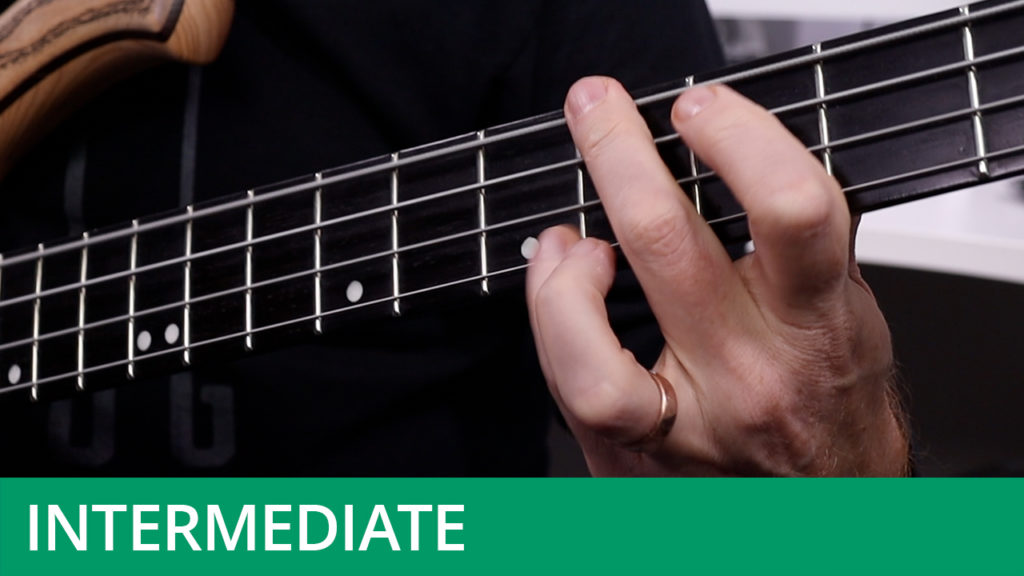Bass Lick of the Week #38
Course Duration: | Difficulty Level: 3
This week’s exercise is a chordal line that is played at a very slow tempo.
This exercise is in the key of C minor and uses some three-note chord voicings for major and minor chords. For the first chord - C minor - fret the C on the E-string with the first finger, and the octave C on the D-string with the third or fourth finger. The Eb on the G-string is fretted by barring across the strings with the first finger. This voicing - root, octave and third - is a good one to know on the bass as it is relatively uncluttered. Although it’s possible to add the fifth of the chord (F) to this voicing, it’s usually best not to, as it can make the chord too dense. As the bass has a low register, it’s usually best to stick to a maximum of three notes in a voicing.
The second chord - Bb - is played with the first finger fretting the Bb on the E-string, the third finger fretting the octave on the D-string, and the second finger fretting the major third on the G-string. These two voicings/fingerings will work for all of the chords in this line.At the end of the second bar, a fill is played over the Eb chord. To play this, fret the Eb with the second finger - you should then find that all of the notes fall under the fingers using the finger-per-fret system. Be sure to play the hammer-ons as written as this will help keep the line legato. If possible, try to allow the final two notes - D and Bb to ring together briefly.
In the fourth bar there is another fill over the Eb chord. This time, fret the Eb with the fourth finger - this will allow you to reach the low G with your first finger.
When playing this line, I recommend adding a little chorus or reverb to your sound. These effects - used sparingly - usually sound good for chordal lines on the bass.This exercise was recorded on a Zon Sonus bass with the pickup pan control favouring the bridge pickup slightly.
To download the backing track and PDF worksheet for this exercise, please visit the Free Stuff section of the website.




